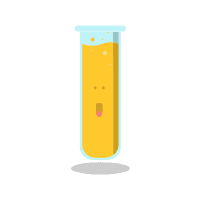
Topic: 3.5 Matter and Energy
Quiz by Texas Education Agency
Grade 3
Science (2010) (Archived)
Texas Essential Knowledge and Skills (TEKS)
Feel free to use or edit a copy
includes Teacher and Student dashboards
Measures 1 skill from
Measures 1 skill from
Track each student's skills and progress in your Mastery dashboards
With a free account, teachers can
- edit the questions
- save a copy for later
- start a class game
- automatically assign follow-up activities based on students’ scores
- assign as homework
- share a link with colleagues
- print as a bubble sheet
5 questions
Show answers
- Q1Some students put two ice cubes on separate plates. One ice cube had a mass of 80 grams. The other had a mass of 40 grams. Which result would be the same for both ice cubes in this investigation?The time it took each ice cube to melt completelyThe total volume of each ice cubeThe temperature at which each ice cube meltedThe amount of liquid produced on each plate60s3.5.C: Matter and Energy
- Q2A student makes a model of the water cycle by using a cup, some water, and plastic wrap. After the student places the model near a sunny window, moisture forms on the inside of the plastic wrap. What change is the student most likely observing in this model?The formation of cloudsCondensationThe warming of airFreezing60s3.5.C: Matter and Energy
- Q3A student observed liquid wax dripping down the side of a burning candle. After putting out the candle’s flame, the student left the room. Several hours later the student observed that there was no longer any liquid on the side of the candle. Which statement explains what most likely happened to the liquid wax?None of the aboveThe liquid wax condensed and was absorbed by the candleThe heat given off by the flame caused the candle wax to evaporate.The liquid wax changed back into a solid as it cooled.60s3.5.C: Matter and Energy
- Q4A student conducts an investigation using caramel candy, paper plates, and a stopwatch. The student places a piece of the caramel candy on each of three plates. The student puts the plates in different locations around the school. The student will record the time it takes for each piece of caramel candy to change state and other observations in the table below. Which question is the student most likely trying to answer with this investigation?Why does the caramel candy change state?In which location does the caramel candy change state the fastest?At what temperature does the caramel candy melt?What causes the caramel candy to keep its shape?60s3.5.C: Matter and Energy
- Q5In an investigation hot water is poured into a clear plastic cup. Another clear plastic cup is placed upside down over the cup of hot water. Which of these is likely to occur during the next three minutes?Water from the bottom cup will become solid as the hot water cools.Water droplets will form on the inside of the top cup as the water vapor cools.The hot water will become hotter because air and heat are trapped in the top cup.The water level will rise in the bottom cup because of evaporation.60s3.5.C: Matter and Energy